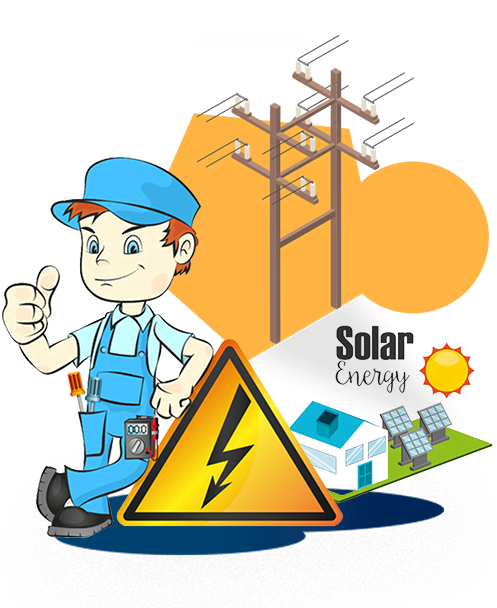Is your home ready for solar?
Gauging your current power use
One of the first steps when considering the switch to solar is looking into your current power use. It’s important to calculate both how much your house uses and when you use it the most. This helps you and your consultant or installer choose the right system for your home.
You can request a spreadsheet of your energy usage from your distributor which will usually be shown in 30-minute increments. They may even allow you to download this off their website for little to no hassle. The amount you use will affect the size of the system you will need. Most households will use around 20kWh a day which should be mostly covered with a 5kW system.
It is important to bear in mind that unless you have installed a battery, your solar system will only provide you with energy during the day when the sun is feeding energy to your panels. During late evenings and early mornings, power production will drop and no power is generated at night. A cloudy day may also decrease power generation. During these times excesses power is drawn from the grid.
Shade and roof direction
The time of day may influence where you want your panels. There are generally three good directions to choose from; north, east, and west. The highest amount of power is harnessed from north-facing panels around midday, however, any energy that is not immediately used is fed back into the grid and although you receive up to 20c on the high end for feed-in tariff it is more economical to use the energy yourself. It may be wiser to have your panels facing east and west for the morning and evening when demand is often at its highest, this is especially the case when household members are away at work or school during the day.
How much sun available to the area of your roof is also very important. This has a direct effect on the amount of energy you can produce with a system and also how the panels should be connected. Shade on one panel can drop the output for all panels along a string and unless this can be fixed by relocating or trimming trees, it could make more sustainable sense to add optimizers to the shaded panels or opt of micro-inverters so the shade from one panel doesn’t affect another.
Pre-installation Repairs and upgrades
Your roof will have to carry a lot of weight and outlast your panels so if any repairs are needed, such as leaks to be fixed, it is important to complete these tasks before the installation. Check your roof for any loose tiles, leaks or other damages. Your roof also needs to be able to hold the weight of your chosen system, an installer can check this for you if you are unsure. It’s also a good idea to have a look at what is already mounted to your rooftop such as satellites and antenna. Sometimes these may need repositioning.
Before you install it is also important to ensure you have a compatible switchboard/meter. Your switchboard will need two free spaces for circuit breakers or it may need to be rearranged by an electrician or upgraded. If you still have old fuses it will need upgrading.

About Us
Future-Oriented
Solar Company
Looking for a Tailored Solar Energy Solution?
Our team of experts are here for You, dedicated to providing sustainable and affordable solar power systems